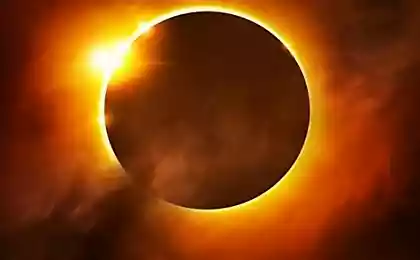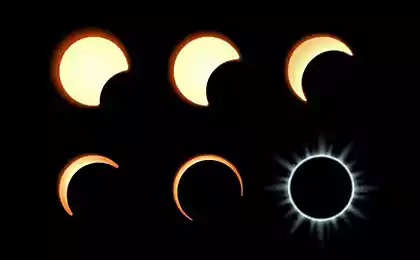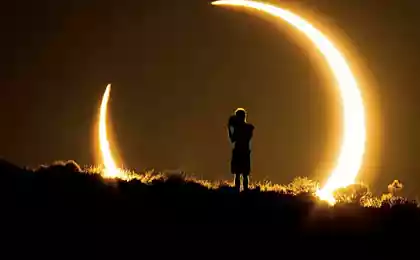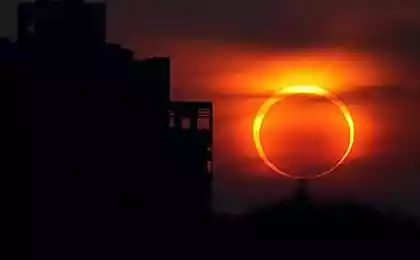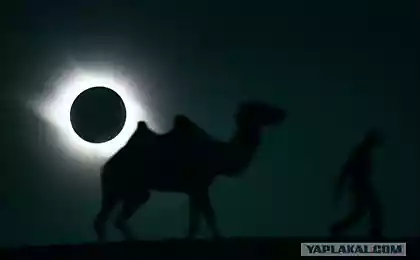2272
Annular solar eclipse
January 15, 2010, early in the morning Moscow time in the northern hemisphere, there was the longest (a little more than 11 minutes) in the annular solar eclipse of the millennium. This phenomenon can best be seen in the Indian Ocean, and the best conditions for observation were in the Maldives. In Russia, with a small partial eclipse phase could be observed in the Urals. At the peak of the eclipse the Moon Close 0, 919 from the solar disk.


The longest solar eclipse of the decade, as shown in this photo with multiple exposures, could be observed in Seoul January 15, 2010. (Park Ji-hwan-AFP / Getty Images)
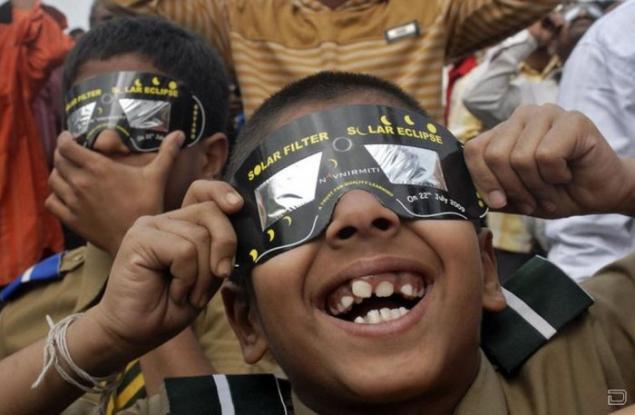
Pupils watch the solar eclipse through special glasses in Hyderabad, India, January 15, 2010. Thousands of people in India have seen a solar eclipse, when the moon is "barred" the road to the sun, leaving him only a piece of the world. (Krishnendu Halder-Reuters)

Shadow of bifocals in the form of a solar eclipse on the ground in Bagalore, India on January 15, 2010. (Aijaz Rahi-AP)

People pray to the Sun God during a solar eclipse at the fair Kumbh in Haridwar, India. According to Hindu mythology, the Kumbh is celebrated in four places in India where, according to legend, the drops of nectar fell life during the war between the gods and demons in ancient times; swim at a location in astrologically special time - then redeem one sin and help yourself to the rescue. Believers Hindus bathe in the holy waters during and after the eclipse. (Saurabh Das-AP)
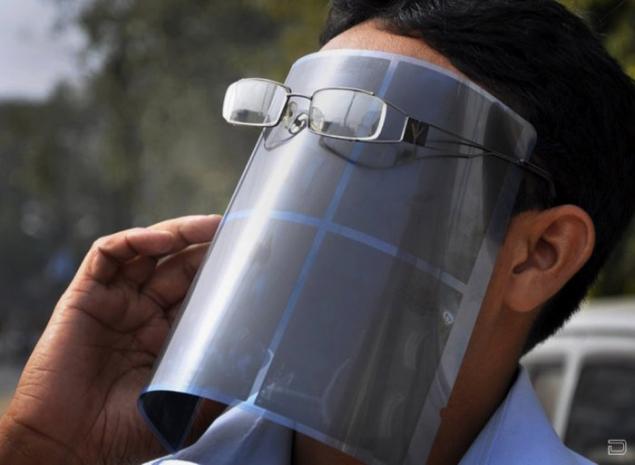
Man film protects the eyes during an annular solar eclipse of Ranchi, India, January 15, 2010. (Sasanka Sen-AP)

South Korean boy looking through a telescope at a solar eclipse in Seoul on January 15, 2010. (Ahn Young-joon-AP)

Primary school pupils in Hubei, China, watch the solar eclipse through special glasses January 15, 2010. (China Daily-Reuters)

A man looks at a solar eclipse through the film in Nairobi, Kenya, January 15, 2010. In Africa, the eclipse could be seen in Chad, Central Afrikasnkoy resbulike, the Democratic Republic of Congo, Kenya, Uganda and Somalia. (Thomas Mukoya-Reuters)
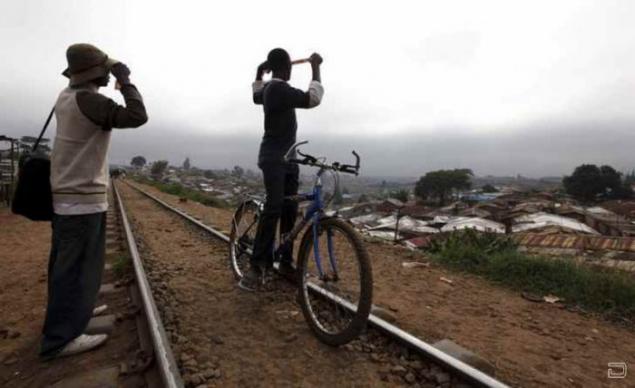
Two young men stopped on the road to watch the solar eclipse through the film in Nairobi, Kenya, January 15, 2010. (Thomas Mukoya-Reuters)

Kenyan observe the solar eclipse through an X-ray in Nairobi, Kenya, January 15, 2010. (Sayyid Azim-AP)
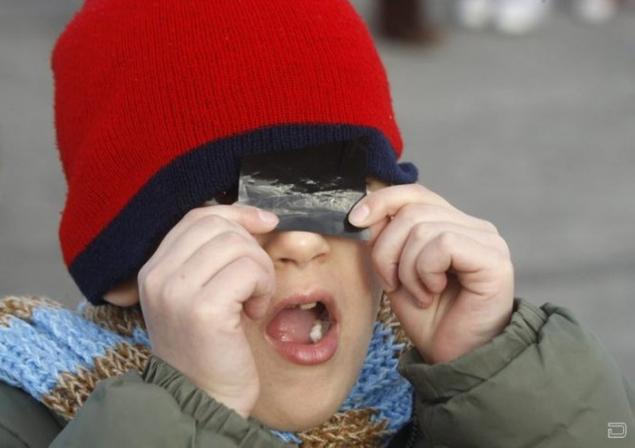
Boy from Amman, Jordan, looking at a solar eclipse through a piece of X-ray January 15, 2010. (Ali Jarekji-Reuters)

Start a solar eclipse is reflected in the palm of a resident of Amman, Jordan, January 15, 2010. (Ali Jarekji-Reuters)

A resident of Amman, Jordan uses his x-ray image to view a solar eclipse January 15, 2010. (Ali Jarekji-Reuters)
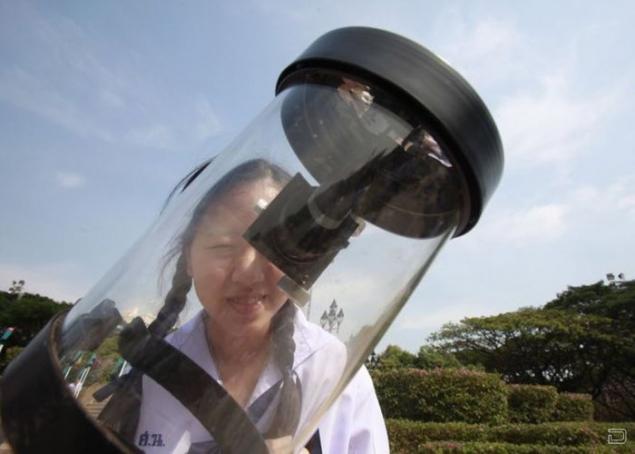
A student watching the solar eclipse through a telescope in Bangkok, Thailand on January 15, 2010. (Chaiwat Subprasom-Reuters)
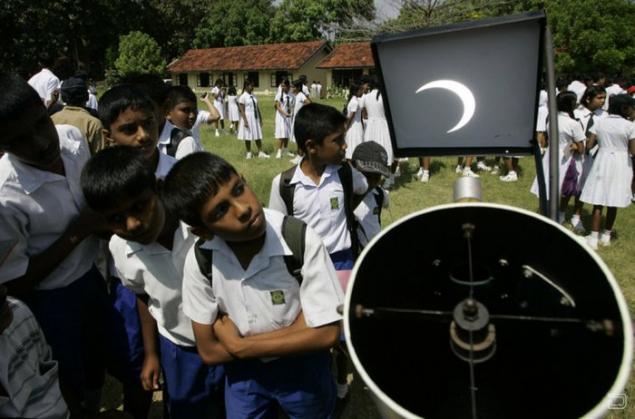
Pupils Sri Lanka watching a solar eclipse in the camp at the observatory in Anuradhapura, Sri Lanka, Jan. 15, 2010. (Eranga Jayawardena-AP)
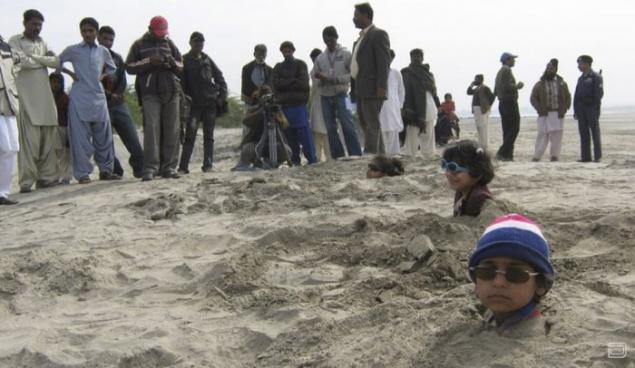
Pakistani children bury themselves in the sand on the banks of the river Indus in Hyderabad, India on January 15, during a solar eclipse. Superstitious Pakistanis believe that if a person suffering from any disease, dig in the sand during a solar eclipse, they will recover. (Pervez Mashi-AP)
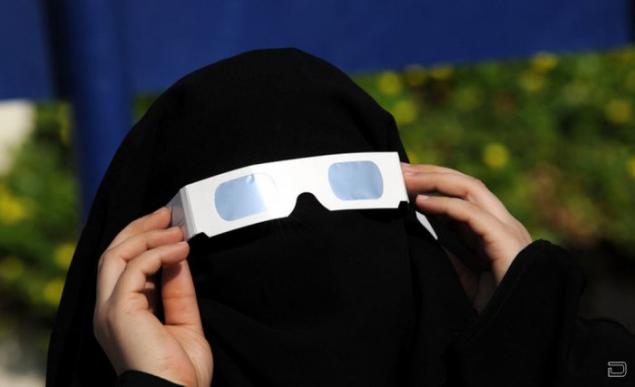
Woman from Jeddah, Saudi Arabia, watching the solar eclipse through special glasses January 15, 2010. (Omar Salem-AFP / Getty Images)
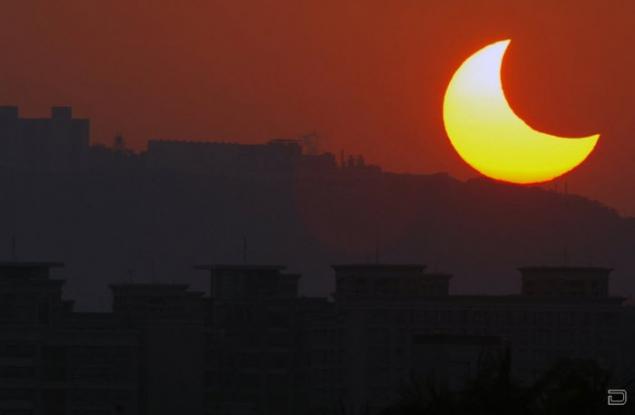
Annular solar eclipse over Taipei, Taiwan, January 15, 2010. (Sam Yeh-AFP / Getty Images)

Total eclipse in Nairobi, Kenya, plunged the city into an eerie twilight of January 15, 2010. (Noor Khamis-Reuters)
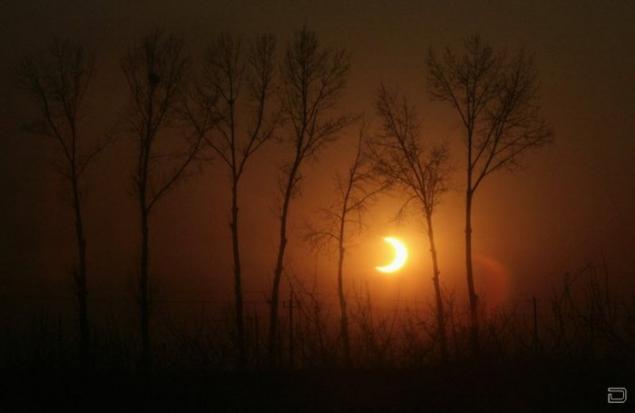
A solar eclipse can be seen between the trees in Beijing on 15 January 2010. (Grace Liang-Reuters)
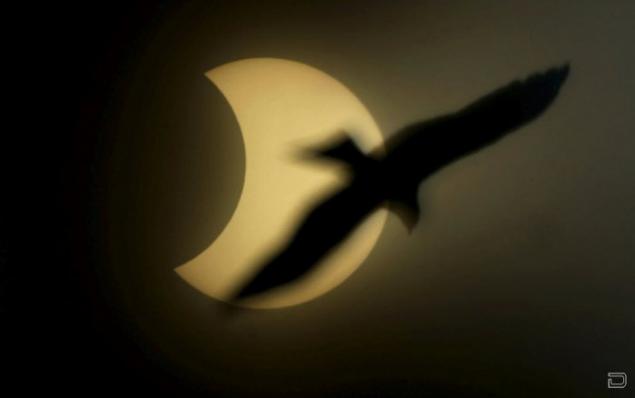
Bird flying through the sky, casting silhouetted against the sun during the annular solar eclipse in New Delhi on 15th January 2010. (AP)


The longest solar eclipse of the decade, as shown in this photo with multiple exposures, could be observed in Seoul January 15, 2010. (Park Ji-hwan-AFP / Getty Images)

Pupils watch the solar eclipse through special glasses in Hyderabad, India, January 15, 2010. Thousands of people in India have seen a solar eclipse, when the moon is "barred" the road to the sun, leaving him only a piece of the world. (Krishnendu Halder-Reuters)

Shadow of bifocals in the form of a solar eclipse on the ground in Bagalore, India on January 15, 2010. (Aijaz Rahi-AP)

People pray to the Sun God during a solar eclipse at the fair Kumbh in Haridwar, India. According to Hindu mythology, the Kumbh is celebrated in four places in India where, according to legend, the drops of nectar fell life during the war between the gods and demons in ancient times; swim at a location in astrologically special time - then redeem one sin and help yourself to the rescue. Believers Hindus bathe in the holy waters during and after the eclipse. (Saurabh Das-AP)

Man film protects the eyes during an annular solar eclipse of Ranchi, India, January 15, 2010. (Sasanka Sen-AP)

South Korean boy looking through a telescope at a solar eclipse in Seoul on January 15, 2010. (Ahn Young-joon-AP)

Primary school pupils in Hubei, China, watch the solar eclipse through special glasses January 15, 2010. (China Daily-Reuters)

A man looks at a solar eclipse through the film in Nairobi, Kenya, January 15, 2010. In Africa, the eclipse could be seen in Chad, Central Afrikasnkoy resbulike, the Democratic Republic of Congo, Kenya, Uganda and Somalia. (Thomas Mukoya-Reuters)

Two young men stopped on the road to watch the solar eclipse through the film in Nairobi, Kenya, January 15, 2010. (Thomas Mukoya-Reuters)

Kenyan observe the solar eclipse through an X-ray in Nairobi, Kenya, January 15, 2010. (Sayyid Azim-AP)

Boy from Amman, Jordan, looking at a solar eclipse through a piece of X-ray January 15, 2010. (Ali Jarekji-Reuters)

Start a solar eclipse is reflected in the palm of a resident of Amman, Jordan, January 15, 2010. (Ali Jarekji-Reuters)

A resident of Amman, Jordan uses his x-ray image to view a solar eclipse January 15, 2010. (Ali Jarekji-Reuters)

A student watching the solar eclipse through a telescope in Bangkok, Thailand on January 15, 2010. (Chaiwat Subprasom-Reuters)

Pupils Sri Lanka watching a solar eclipse in the camp at the observatory in Anuradhapura, Sri Lanka, Jan. 15, 2010. (Eranga Jayawardena-AP)

Pakistani children bury themselves in the sand on the banks of the river Indus in Hyderabad, India on January 15, during a solar eclipse. Superstitious Pakistanis believe that if a person suffering from any disease, dig in the sand during a solar eclipse, they will recover. (Pervez Mashi-AP)

Woman from Jeddah, Saudi Arabia, watching the solar eclipse through special glasses January 15, 2010. (Omar Salem-AFP / Getty Images)

Annular solar eclipse over Taipei, Taiwan, January 15, 2010. (Sam Yeh-AFP / Getty Images)

Total eclipse in Nairobi, Kenya, plunged the city into an eerie twilight of January 15, 2010. (Noor Khamis-Reuters)

A solar eclipse can be seen between the trees in Beijing on 15 January 2010. (Grace Liang-Reuters)

Bird flying through the sky, casting silhouetted against the sun during the annular solar eclipse in New Delhi on 15th January 2010. (AP)



